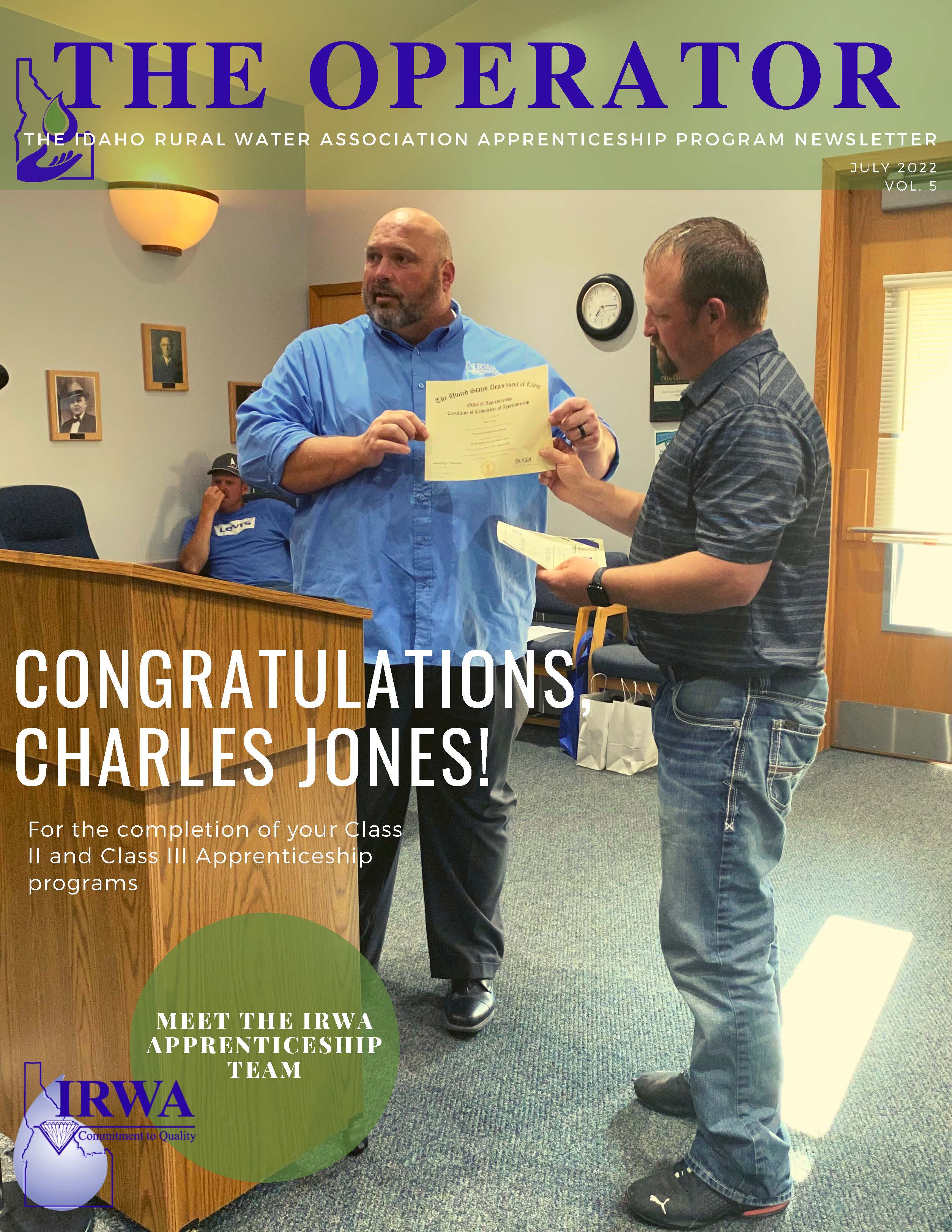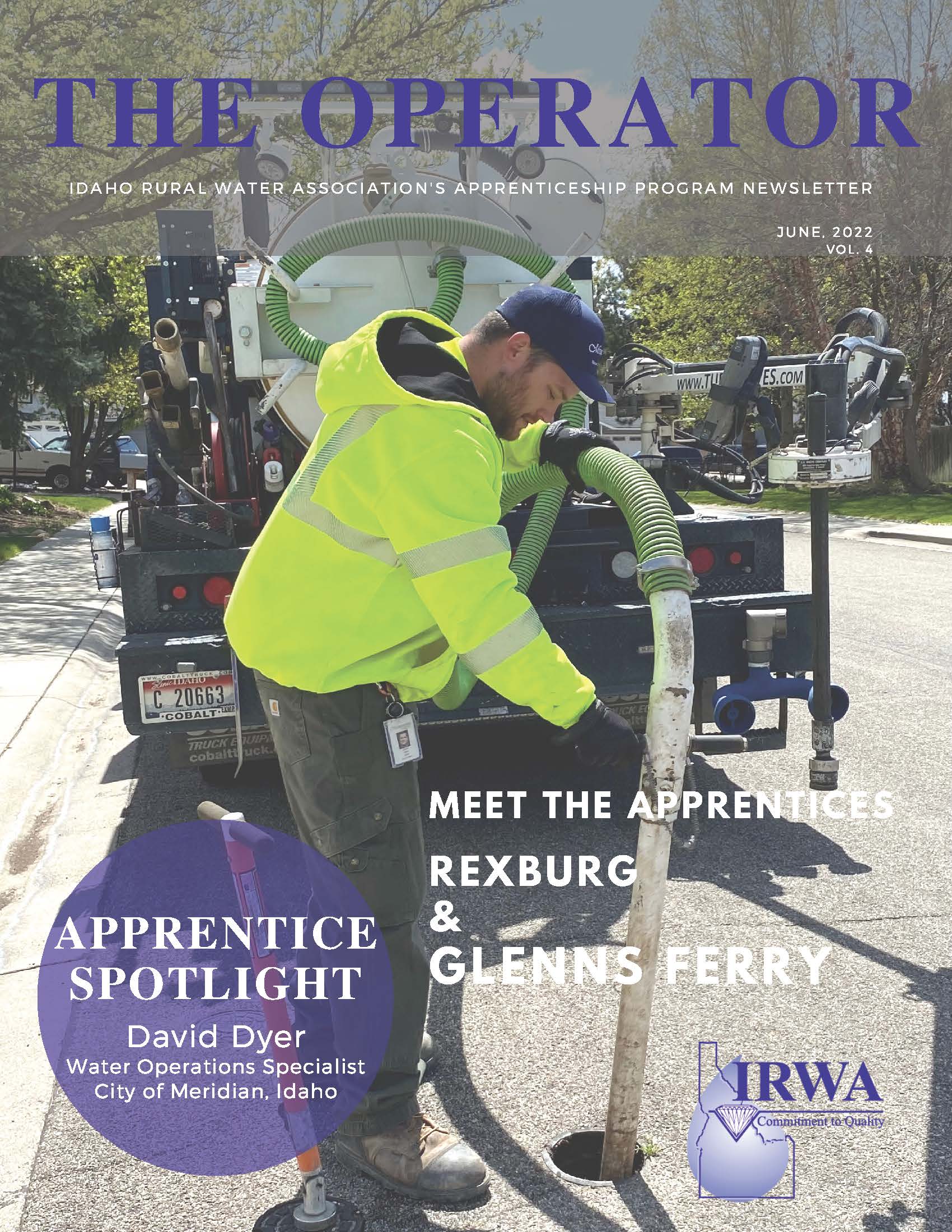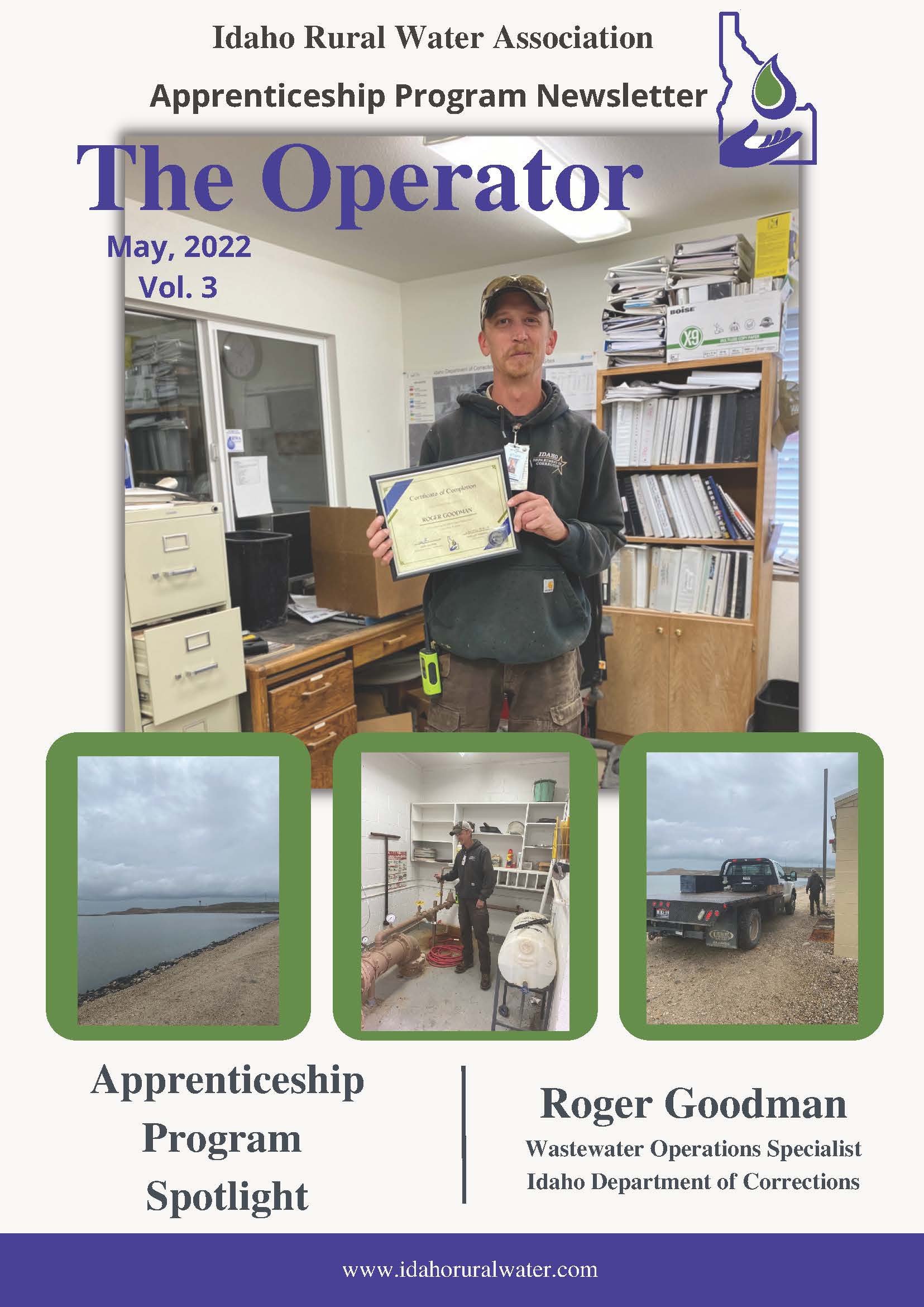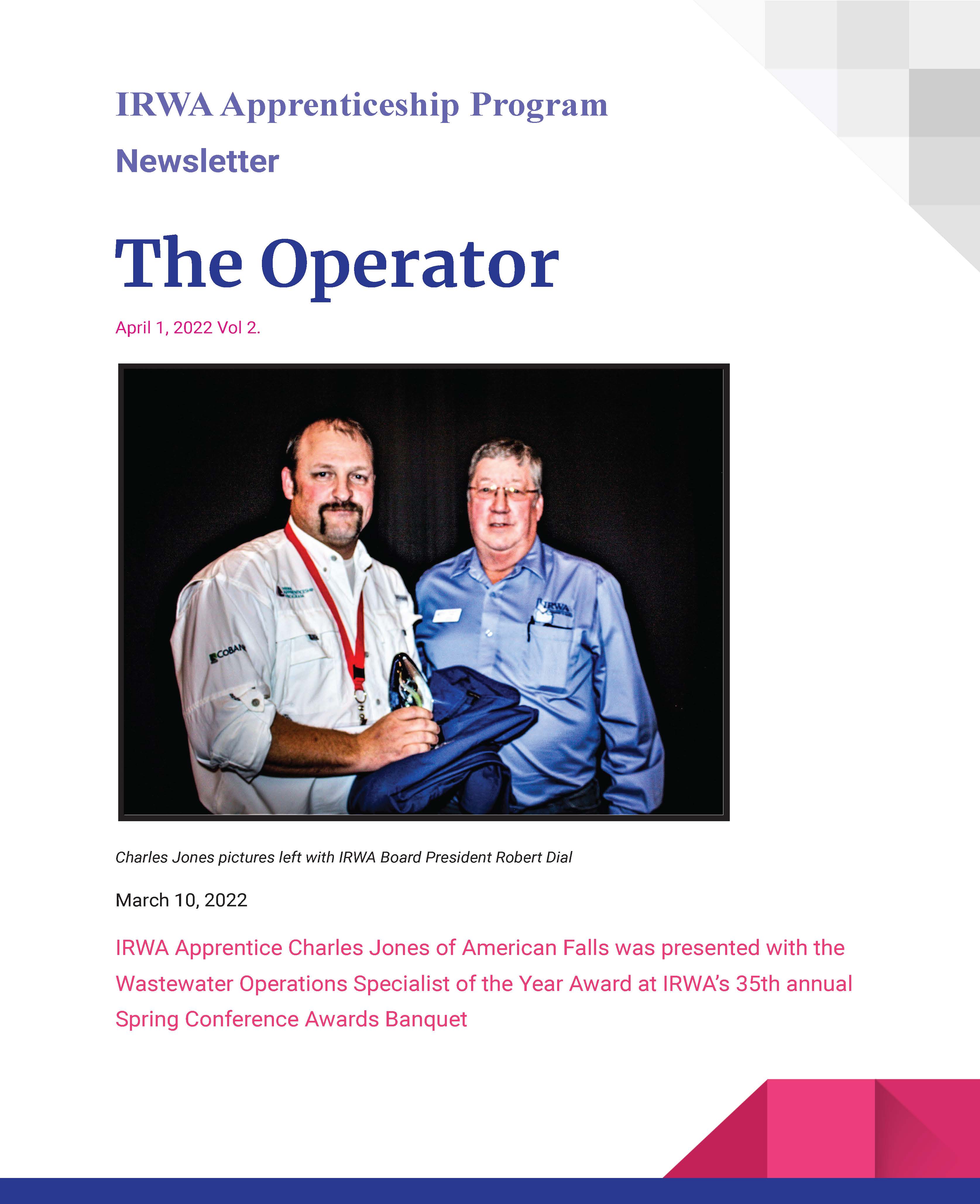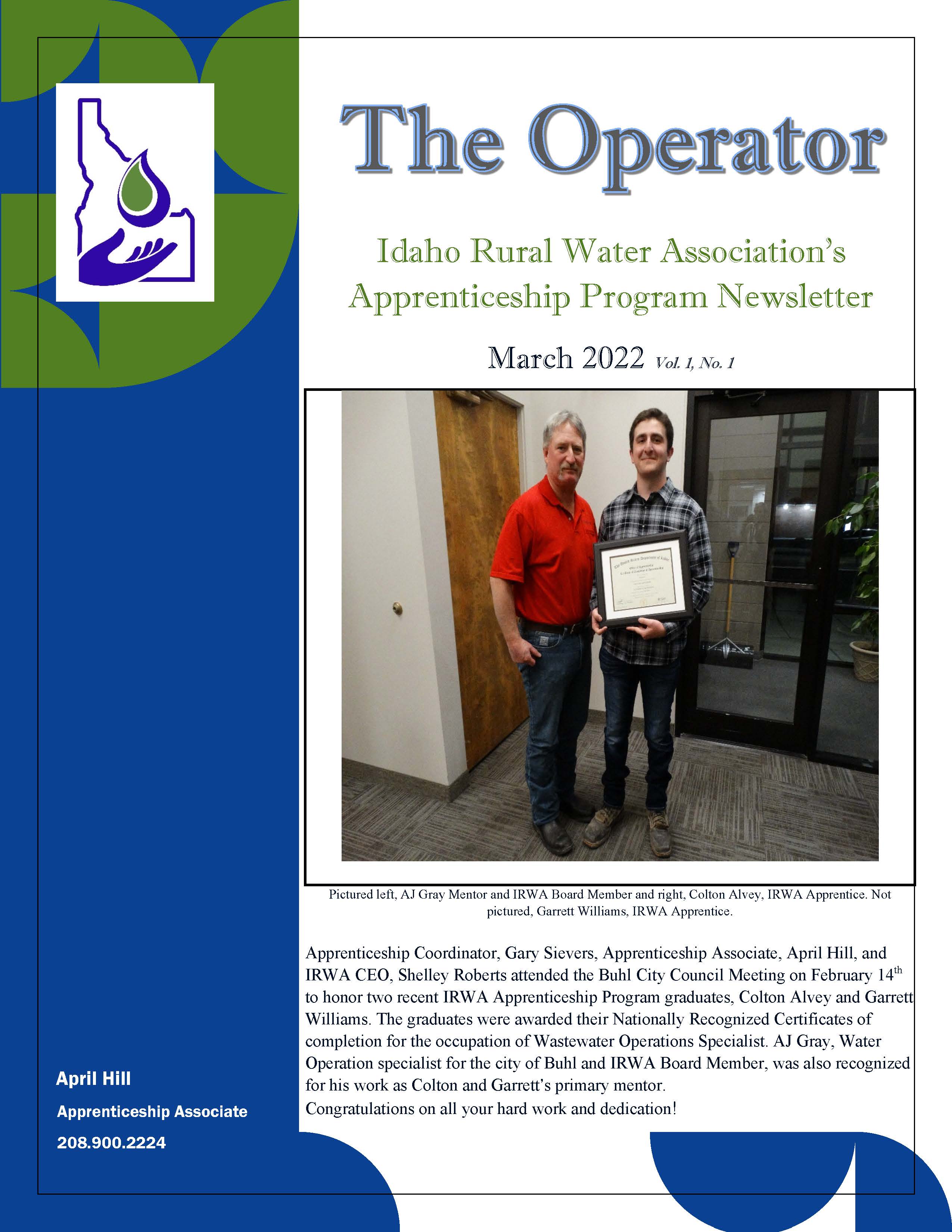Apprenticeship Program
Why Apprenticeship?
Many citizens and community leaders do not realize the time, knowledge and commitment needed to obtain the proper licensing to ensure our communities have access to clean, safe drinking water. It takes years of on the job experience as well as education to obtain the proper knowledge and licensure to properly operate a drinking water or wastewater utility. In addition, recent advancements in water treatment and supply technology have increased the skills and training needed to protect public health and the environment. The combination of on the job training and classroom education make the registered apprenticeship program an excellent fit for our industry.
Water & Wastewater Operations Specialist Apprenticeship Programs
Water and Wastewater Operations Specialists are imperative to your community for access to clean drinking water and to ensure wastewater effluent is returned to the environment properly. But with close to 50% retiring in the next five years, communities will fail to prosper or eventually even exist if replacements aren’t put in place AND properly trained. A growing population and increased demand for water and wastewater treatment services plus an aging workforce will drive employment growth and qualified, certified Operations Systems Specialists will be in high demand.
Our standard program prepares the apprentice for class II licensure testing in either water or wastewater.
Our advanced program prepares the apprentice to sit for class III licensure testing in either water or wastewater.

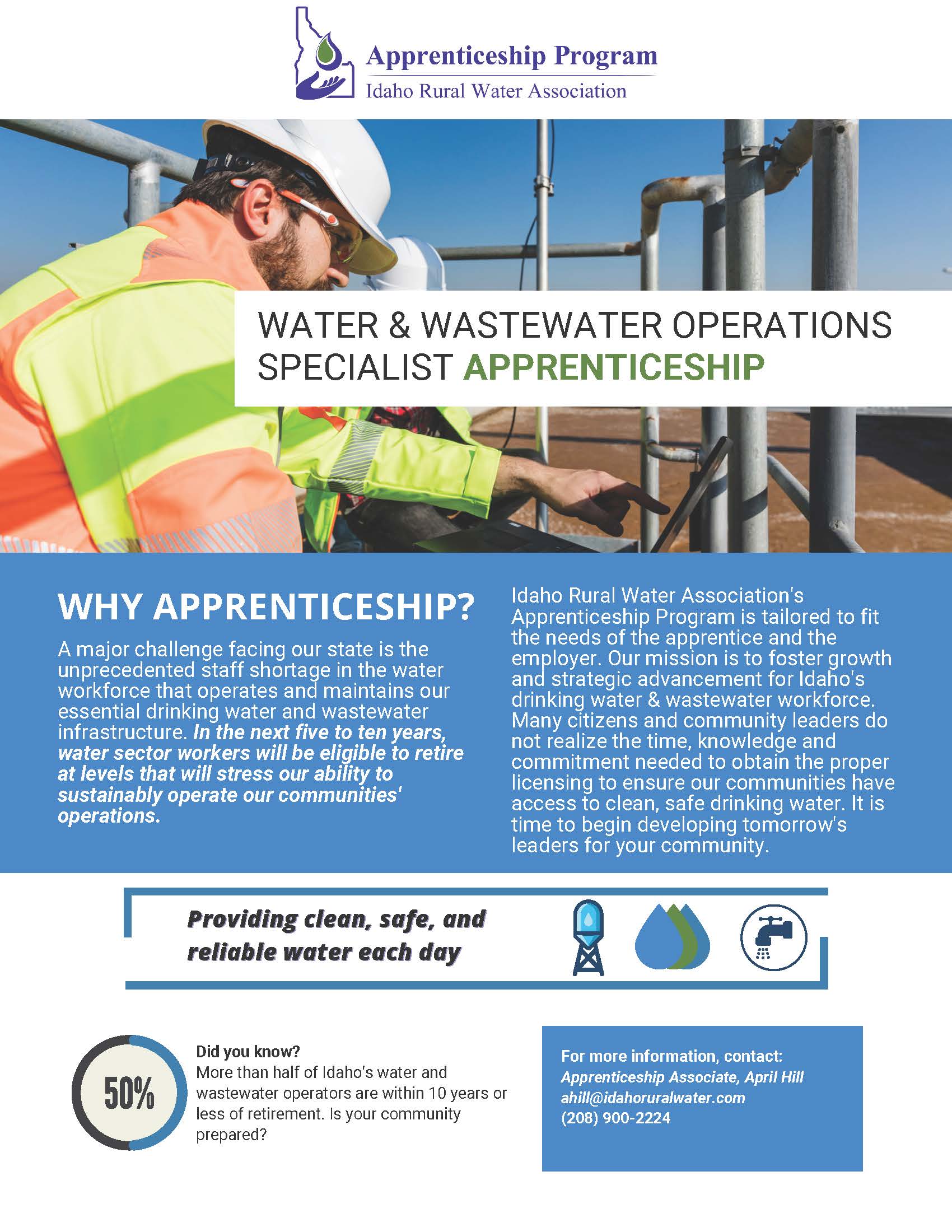
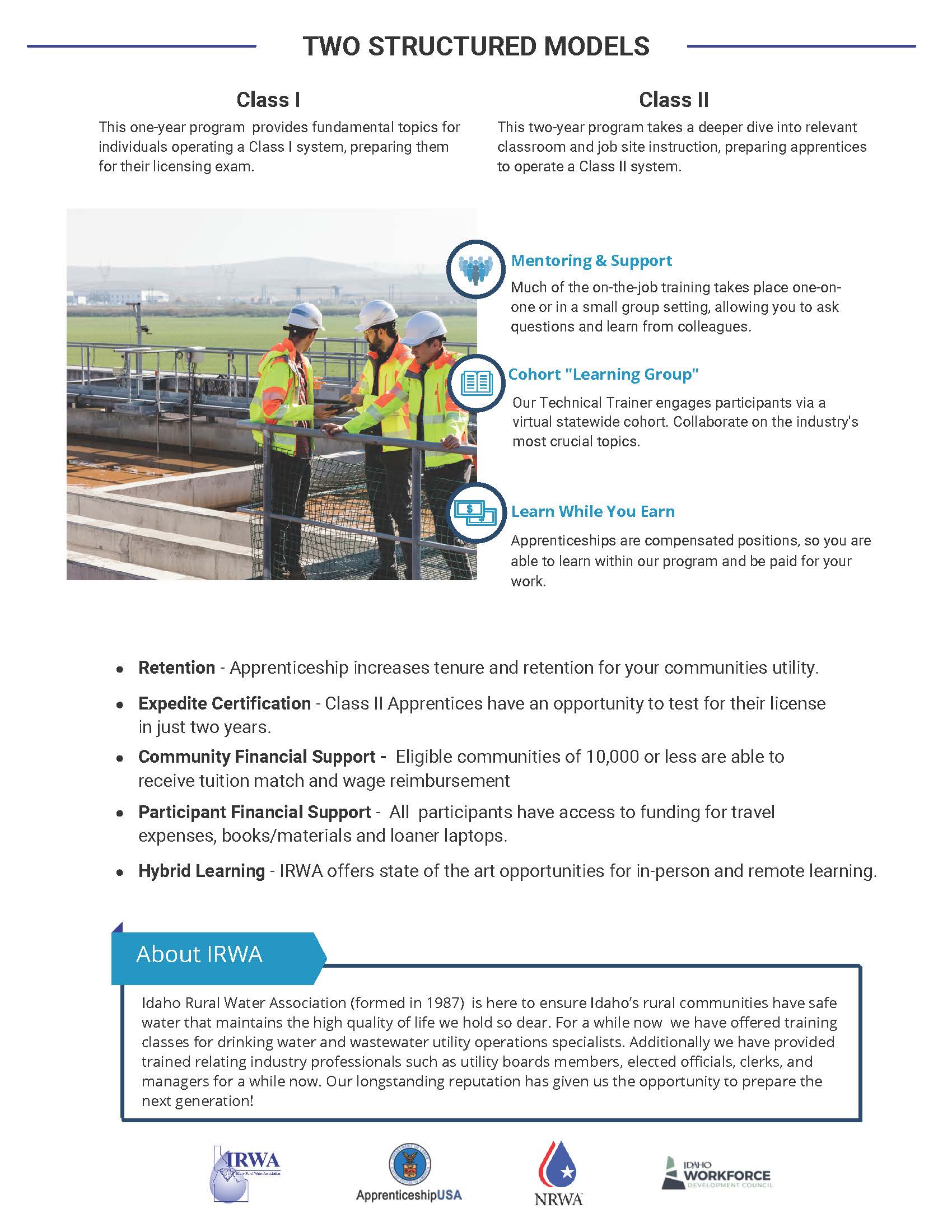
Apprentice Information
Benefits
- Earn while you learn
- Make a real difference in the community
- Gain practical skills you can take anywhere
- Train alongside an experienced mentor
- Job security (every community is required to have a certified drinking water/ wastewater operations specialist
- Stable / Non-fluctuating Industry
- More affordable than college
Standards of Apprenticeship (standard)
Minimum Qualifications:
Age – 18
Education – GED or High School Diploma
Physical – Must be capable of performing physical labor
Drug Screen – Must pass a drug screen
Background Check – Must pass a background check
Driver’s License – Must have a valid driver’s license
Employer Information
Benefits
- Increase employee retention and advancement
- Replace retiring workforce
- Transfer knowledge from experienced technicians to new apprentice
- Ensure well-rounded, highly trained employee is produced
- Possibility of financial incentives to offset training costs
- Recruitment assistance
Standards of Apprenticeship (standard)
2 Components of Apprenticeship
On-the-Job Learning (OJL): An apprentice is typically required to complete a minimum of 2,000 hours of structured on-the-job (OJT) training. Apprentices are paid wages while participating in OJT.
Related Technical Instruction (RTI): Apprentices must also be engaged in classroom learning that supports their OJT activities. It is recommended that the apprentice complete at least 144 hours of related technical instruction each year. Typically, the employer pays the cost of the RTI, and often also pays wages for the time the apprentice spends in class.

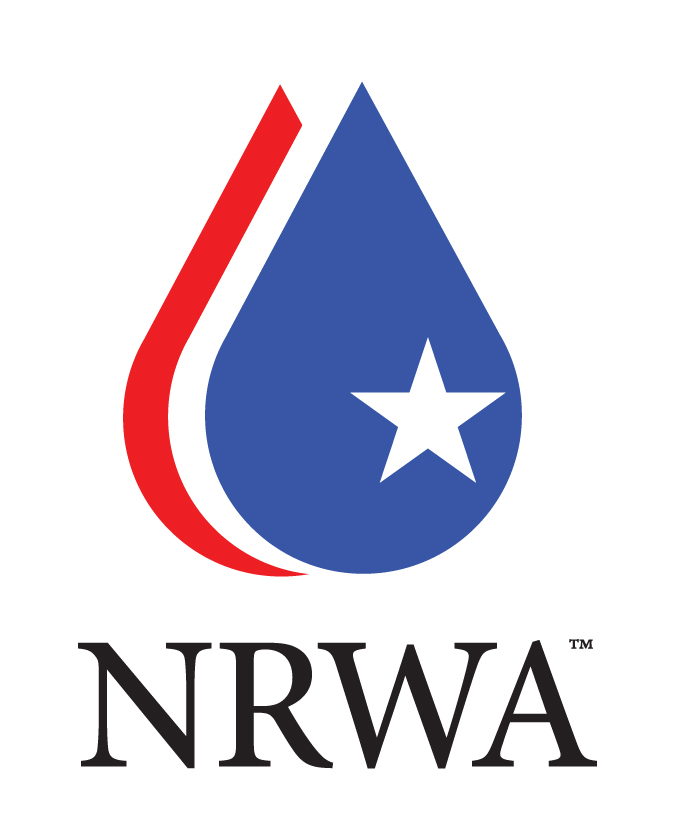
Video Resources for you:
Water Where Science and Technology Meets
Finding Fulfillment a Career in Water
For more information, contact:
Gary Sievers, IRWA Apprenticeship Coordinator
(208) 530-3115
gsievers@idahoruralwater.com
The Idaho Rural Water Association will not discriminate against apprenticeship applicants or apprentices based on race, color, religion, national origin, sex (including pregnancy and gender identity), sexual orientation, genetic information, or because they are an individual with a disability or a person 40 years old or older. The IRWA will take affirmative action to provide equal opportunity in apprenticeship and will operate the apprenticeship program as required under Title 29 of the Code of Federal Regulations, part 30.
